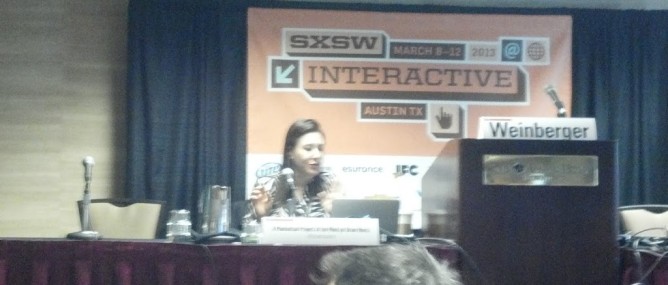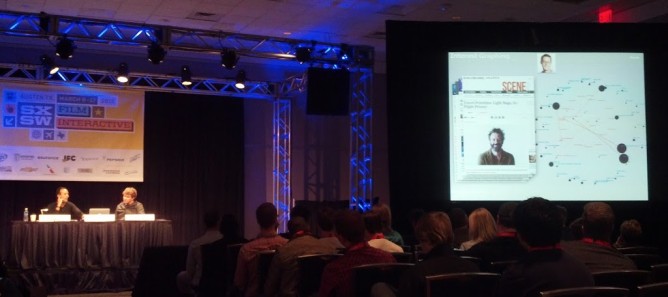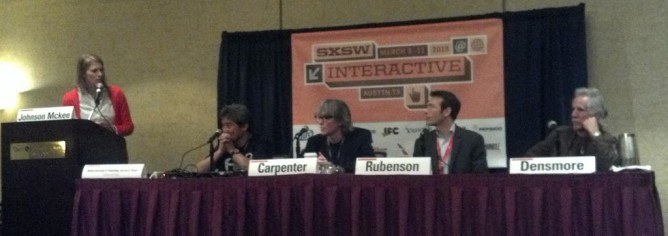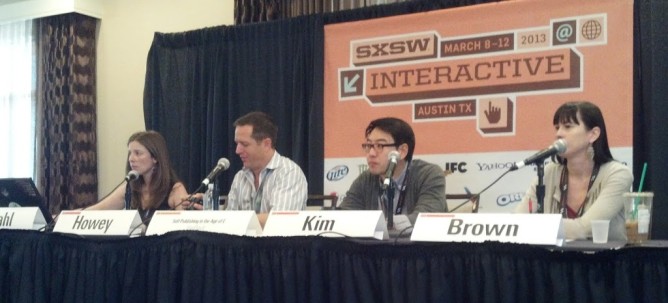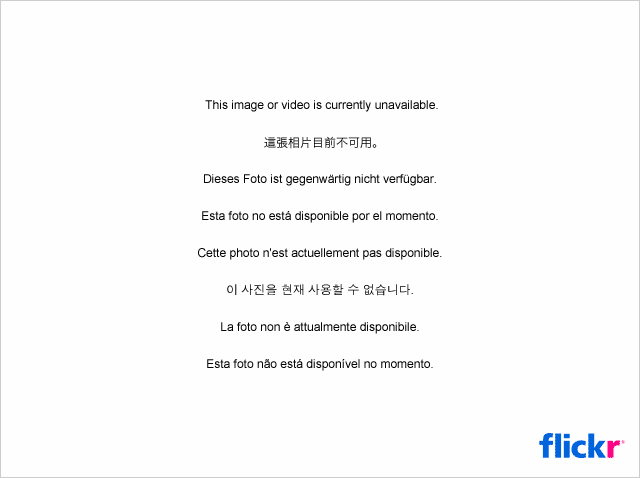A Manhattan Project of the Mind (or Brain Wars)
Sharon Weinberger, @weinbergersa, Columnist BBC.com/Future
#brainwars
· Background
o Do a weekly column called “Code Red”
o Write about the Pentagon’s role in neuroscience
o For ten years I’ve written about the technology the Pentagon chooses to fund.
o About 6 years starting writing this articles.
o After writing these articles, starting getting thousand of letters from people who claimed to be experimental test subjects.
§ Whether these people are right or wrong, they are googling what the Pentagon is doing, and finding out that in fact, the Pentagon does have technology to make voices in people’s heads.
o This is partly about neuroscience as a weapon.
o What are they really doing, and what are they not doing? What’s the hype and what’s the reality?
o There’s some good science, and some bad science.
· You can trace the Pentagon’s interest back to:
o J.C.R. Licklider’s vision in 1960: a man-compuyter symbiosis.
§ Seems obvious today, but in 1960, the notion that a computer wouldn’t just crunch numbers, but would interact with you and help you make decisions.
§ The game Missile Command is similar to a real problem the air force had in the 1950s, and hence developed Sage, a system for monitoring and tracking incoming missiles.
o Jacques Vidal’s “Toward direct brain-computer communication”
§ Got funding from DARPA as a basic science project to use observable electrical brain signals to control technology.
· DARPA Director’s Vision 2002:
o Imagine 25 years from now where old guys like me put on a pair of glasses or a helment and open our eyes. Somewhere there will be a robot that will open it’s eyes…
· Duke University Medical Center in 2003
o Taught rhesus monkeys to consciously control the movement of a robot arm in real time, using only signals from their brains.
o Crude approximation, takes a lot of training.
o But it works
· Augmented Cognition (AugCog) 2003/2004:
o Goal for order of magnitude increase in mental capacity.
o Want to help soldiers manage cognitive overload.
o Vision of Augmented Cognition 2005
§ Video showing how sensors can be used to detect overload by brain. When too many streams of information threaten to overload here, the user interface is streamlined to highlight certain elements and reduce others (e.g. maximize text, minimize images).
· Neurotechnology for intelligence analysts
o They look at hundreds of images each day, trying to glean information.
o Scientists wanted to watch the P300 signal (object recognition), to see if they could help the analysts better spot things.
o In theory, they could detect the signal faster than the consciousness can interpret it. There’s 300ms delay in the conscious brain.
§ We don’t totally understand why there is the delay.
· In 2008, did project called “Luc’s binoculars”
o Wanted to use binoculars and P300 signals to help identify objects of interest.
· In 2012, actually have a system…soldier with EEG in the lab. But to actually develop technology to use in the field, it is much harder.
· Neuroprosthetics: 2009
o By 2004, 2005, and 2006, one of the biggest problems was roadside bombs. Lots of soldiers losing limbs.
o Modern prosthetics are cable systems: you clench a muscle in your back, it is sensed, and moves a cable to move the arm.
o It’s very, very hard.
o Our understanding of which neurons do what is still crude…it’s probabilistic.
o Mechanical arms are still more useful.
· 2013: Brain Net
o brain-to-brain interface in rats
o Same guys at Duke who did the rhesus monkey brain implant
o They linked two rat brains… one is the encoder, and one is the decoder.
· Other Directions: Narrative Networks
o “neuroscience for propaganda”
· Future Attributes Screening Technology
o When you go through the airport, a subset of agents are trained to specifically look for suspicious behaviors: facial expressions, body language.
o DHS want use remote sensors to look at physiological indicators: heart rate, sweating, blood flow in face, etc…
§ They want to identify “mal-intent”. Whether you harbor the intent to commit a crime.
o See Homeland Security Youtube video
§ Future Attribute Screening Technology
§ Battelle / Farber
o All sorts of issues: Why are people nervous? Because they are going to commit a crime? Or because they’re skipping work to go to an event? Or because they ate a ham sandwich?
§ Decades of research have shown we still can’t reliably detect lies.
§ We certainly can’t detect mal-intent.
· Future Directions: Smart Drugs
o No formal studies done.
o Anecdotal reports: 25% of soldiers in field use a smart drug such as Ritalin or Adderall.
o Should we test smart drugs?
o Possibly the government is staying away from it because of the long history of problematic research done in the past (LSD experiments by CIA), plagued by ethical concerns.
· President Obama’s Vision 2013
o Unlocking and mapping the brain. Wants to flow billions of dollars into. If that happens, DARPA will be one of the major sources of funding.
· Hype vs. Reality
o Brain controlled drones?
§ The technique is slow. 10s of bits of information per minute, and subject to noise.
§ Not obvious that it can be used yet for field applications.
· Where are we today?
o Brain-computer interface already here in limited capacity: very limited, very crude, don’t work well.
o Neuroprosthetics still years away.
o Deception Detection: very little agreement, even on the basic science.
o Mind-controlled drones: a generation away.
· Implications
o Technological: expands the battlefield through telepresence
o Ethical: human testing questions…is it an even battlefield for augmented soldiers?
o Do we have the right to brain privacy? Do soldiers?
o It’s hard to have a serious debate about futuristic technology. (The giggle factor)
§ Will: interesting idea, given increasing pace of technology, we need to talk about the future, but it’s hard to do.
· Was able to participate in experiment using FMRI to try to read associated brain activity
o In two hour session, surrounded by ton of gear, had a difficult time being able to even detect what part of brain associated with tapping her finger.
o If it was that hard to detect such a simple thing, then reading deeper thoughts, reading minds, is very far off, even if it is ever possible.






